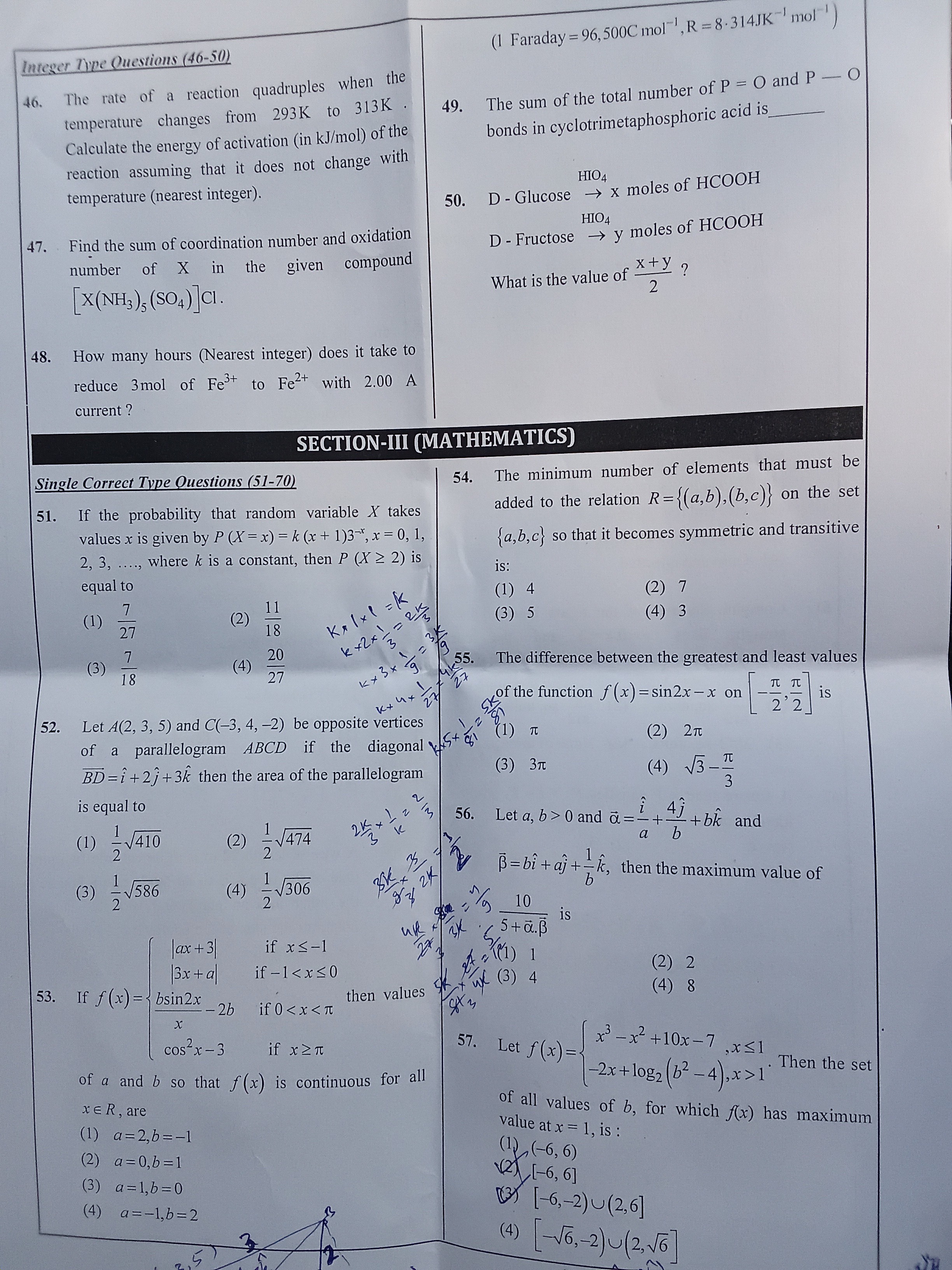Question
Question: The rate of a reaction quadruples when the temperature changes from 293K to 313K. Calculate the ener...
The rate of a reaction quadruples when the temperature changes from 293K to 313K. Calculate the energy of activation (in kJ/mol) of the reaction assuming that is does not change with temperature (nearest integer).

Answer
53
Explanation
Solution
The integrated Arrhenius equation relates the rate constants (k1,k2) at two different temperatures (T1,T2) to the activation energy (Ea) and the ideal gas constant (R):
ln(k1k2)=REa(T11−T21)Given T1=293 K, T2=313 K, and k1k2=4. Using R=8.314 J/mol·K, we substitute these values:
ln(4)=8.314Ea(2931−3131)Rearranging for Ea:
Ea=(2931−3131)8.314×ln(4)≈52857.6 J/molConverting to kJ/mol and rounding to the nearest integer gives 53 kJ/mol.
